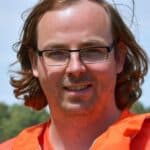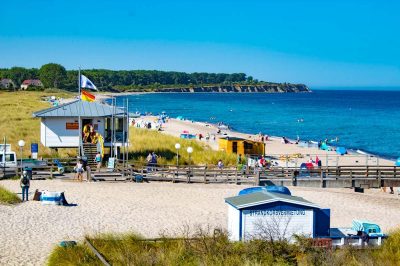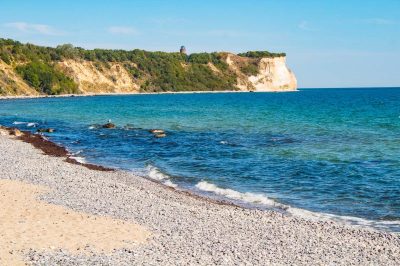Between the Baltic Sea, the backwater and the Szczecin Lagoon, lies Usedom island in the far northeast of Germany. It is one of the sunniest areas in the country. Its 40 kilometers of sophisticated seaside resorts line the Baltic Sea beach, while tranquility and idyllic scenery reign in the hinterland. The urban center of Usedom, however, is the Polish city of Świnoujście, with its wide city beach and numerous cafés, bars and restaurants. Swinemünde, as the city is called in German, is located in the very east on the Polish tip of the island. On Usedom island you will not only find beaches and nature, but also culturally the island has a lot to offer. If you prefer to spend your vacation actively, get on a bike, a kayak or a surfboard.
These are the most beautiful sights on Usedom island
Some of the most beautiful Usedom sights we would like to present to you here. And if you are interested in the most beautiful seaside resorts on the Baltic Sea in general, just click here.
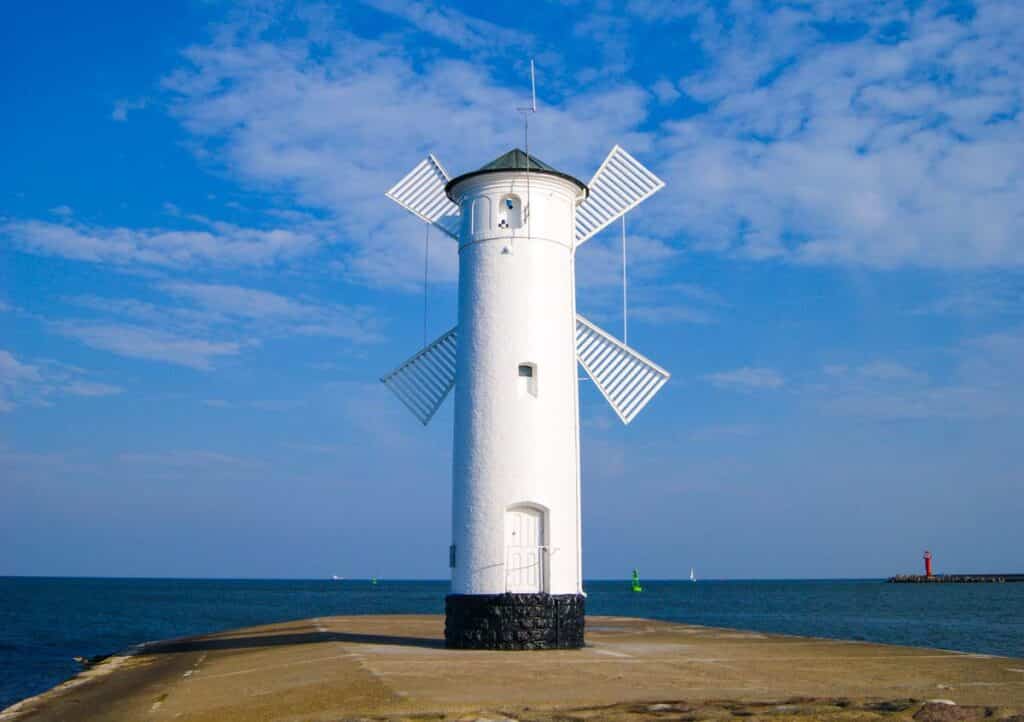
Świnoujście
With a good 41,000 inhabitants, Swinoujscie in Poland is the largest and liveliest city in the region. When the port city on the river Swine opened its first official bathing season in 1824, it started its rise to become a popular seaside resort, visited mainly by guests from Berlin until World War II. A wide sandy beach, a promenade, a spa park and the small, nicely restored old town as well as numerous cafés, bars and restaurants characterize the town’s summer flair. Also worth seeing is the harbor with the old lighthouse and its two stone embankments extending far out into the Baltic Sea.
On the accessible west pier stands the landmark of Świnoujście: the gleaming white Mühlenbarke built in 1873/1874. The three fortifications still standing on both sides of the Swine date from the 19th century and were intended to protect the city from attacks from the water. In short, Swinoujscie is an ideal starting point to explore Usedom and its sister island Wollin.
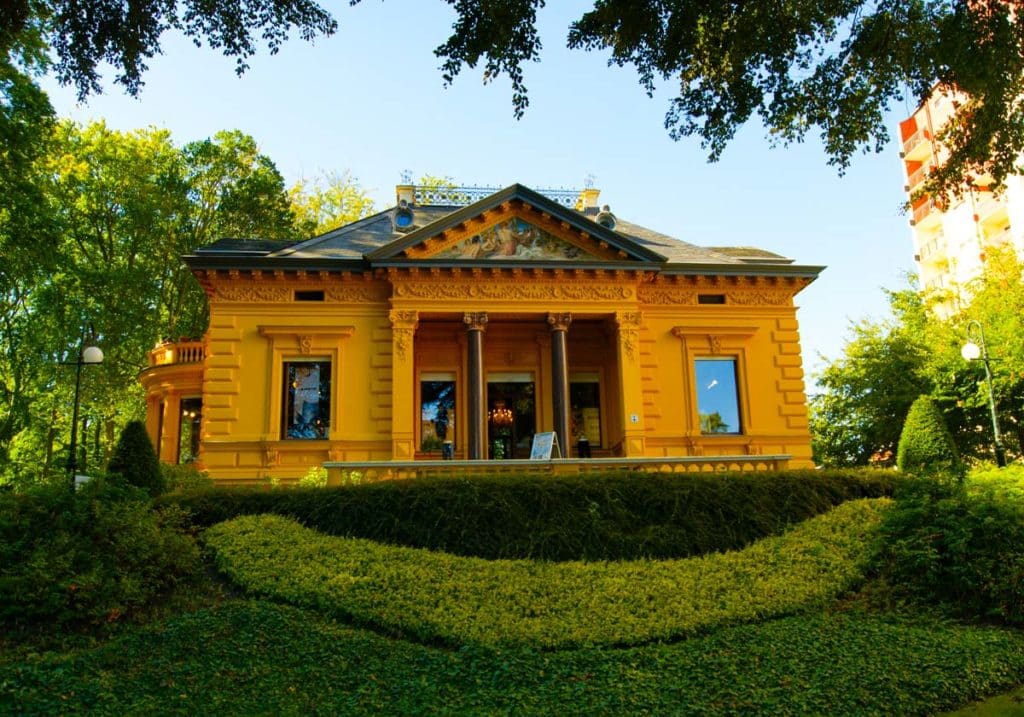
Imperial Spa Resorts
Bansin, Heringsdorf and Ahlbeck are by far the most popular vacation resorts in the German part of Usedom. Their lifeline is the lively promenade, which unites the three imperial resorts into one large seaside resort – on one side the rushing Baltic Sea, on the other magnificent villas in seaside style. You can stroll from pier to pier or even ride your bike to Swinoujscie. Probably none of the seaside resorts on Usedom is as chic and sophisticated as Heringsdorf. Its pier, complete with stores and restaurants, juts 500 meters into the sea – a veritable catwalk for holidaymakers. Even German Emperor Wilhelm II repeatedly visited Heringsdorf for tea more than a century ago.
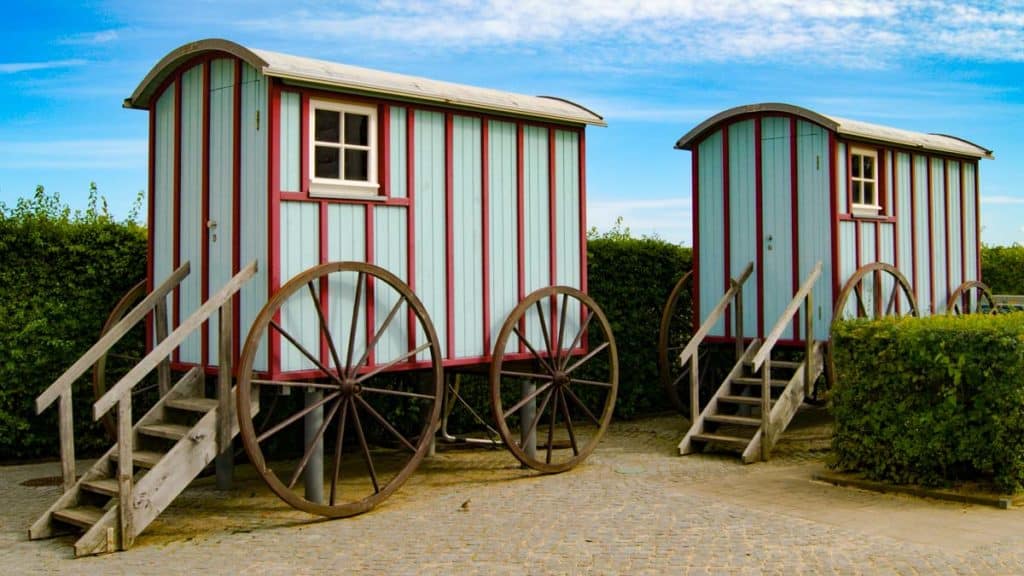
Thus, after the reunification of Germany, tourism marketers renamed the “baths of the working people” into the “Imperial Spas”. The Russian writer Maxim Gorki was also a guest in Heringsdorf in 1922, which is why a small museum was set up for him in GDR times, which is now called Villa Irmgard. The cultural life of the Kaiserbäder takes place there. Another famous writer was born in Bansin: Hans-Werner Richter (1908-1993), spiritus rector of the legendary literary meetings of Group 47. His autobiographical novel “Spuren im Sand” is a wonderful beach read.
Amber Baths
Where the island reaches its narrowest point between the backwaters and the open sea, Ückeritz, Loddin, Koserow and Zempin line the Baltic Sea coast as if strung on an amber necklace. Zempin and Loddin promise a lot of nature, tranquility and deceleration. More lively, on the other hand, are Ückeritz with its campsites and Koserow with its new pier and the salt huts, where herring used to be salted in hard work. The fine sandy beach of the Baltic Sea and the harbors on the Achterwasser are the greatest jewel of the amber spas.
When you climb the cliff edge of the 58-meter-high Streckelsberg near Koserow, an impressive sea view opens up to you. Klaus Störtebeker, the legendary pirate, is said to have kept his stolen goods here. And while we are on the subject of the myths of the Baltic Sea: Vineta, the city of unspeakable wealth that sank into the tides of the Baltic Sea, is also said to have once been located off Koserow.
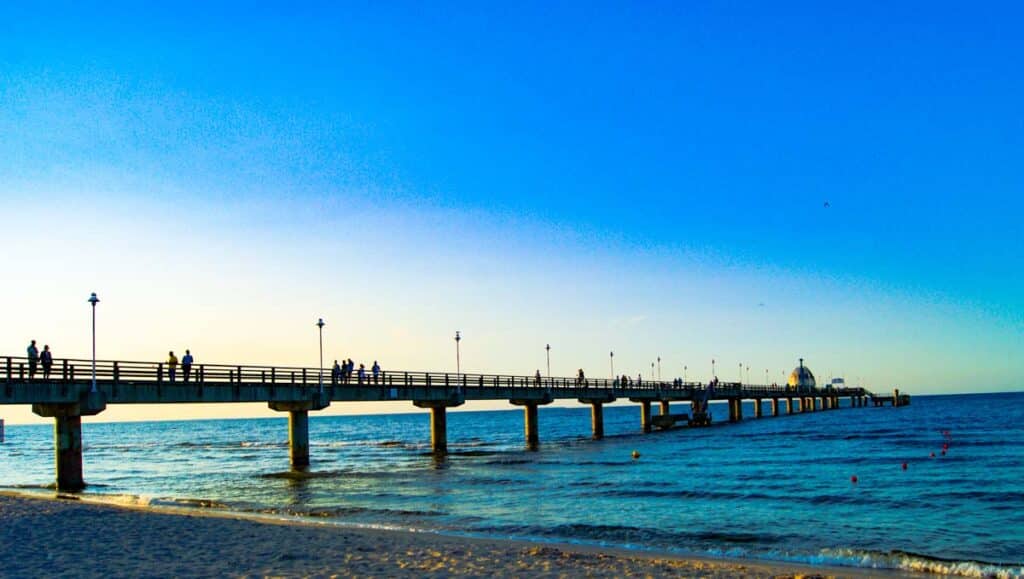
Zinnowitz – Trassenheide – Karlshagen
Usedoms Bäderbahn (Bath train) connects all the seaside resorts of the island, including Zinnowitz, Trassenheide and Karlshagen, which the tourism managers have not yet given a common name. Perhaps this is because Trassenheide and Karlshagen are rather unsophisticated places.
With their fine sandy wide beach and shallow water, they are very popular with families with children. Accordingly, not far from the resorts there are also numerous leisure activities for rainy days (Butterfly Farm, Die Welt steht Kopf or Wildlife Usedom). Unfortunately, they are surrounded by the charm of a commercial area. Magnificent spa architecture, on the other hand, awaits you in Zinnowitz. Zinnowitz has been characterized by its beach promenade since the end of the 19th century when seaside tourism took hold. The landmark of Zinnowitz, however, is the wooden Vineta sea bridge, at the end of which a diving gondola sinks into the Baltic Sea water.
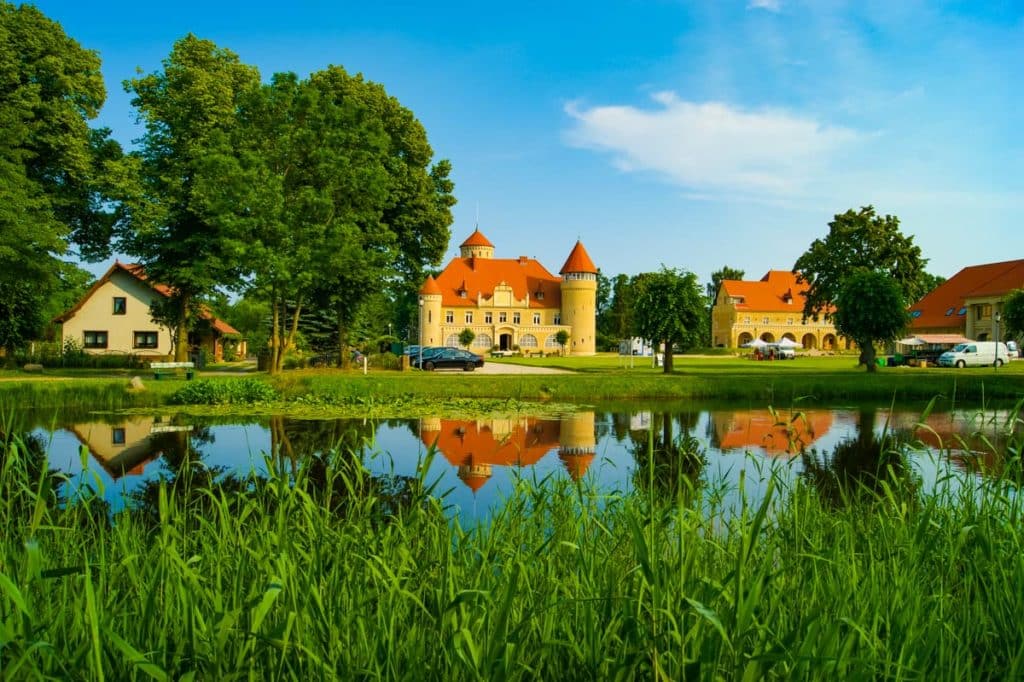
Achterland
The Achterland is a quiet place. The old village church in Morgenitz stands at the end of the road as if enchanted. The small town of Usedom, which centuries ago was the hub of the island, sunbathes sleepily. At the picturesque village pond in Stolpe, an old castle rises gloriously. Bisons graze in Prätenow. The old Dutch windmill sits enthroned on a hill in Benz – at its feet you can enjoy coffee and cake. Lieper Winkel, with its five small villages between the Peene River and the backwater, is almost completely isolated from the world.
The best way to explore this rural idyll is by bike, just as Lyonel Feininger (1871-1956) once did. The young German-American painter cycled through the Achterland many summers with pencil and sketchpad and later made the Usedom province immortal in world art. With his work at the Bauhaus (more about the Bauhaus and Feininger can be found in our articles about the Bauhaus Dessau and the Bauhaus Weimar), he became one of the most important artists of Classical Modernism.
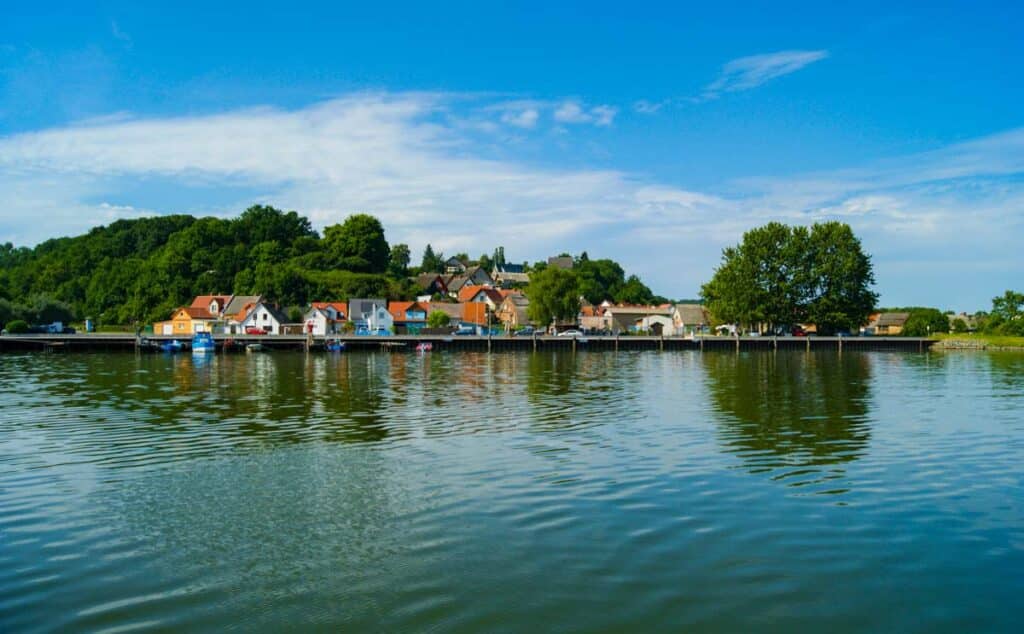
Kamminke
Oh, how picturesque! On the Szczecin Lagoon, close to the Polish border, lies the fishing village of Kamminke, home to just 300 people. Ducked and mostly colorful thatched-roof houses line the crooked alleys. In the harbor you can buy fresh and smoked fish. Here you can look out over the lagoon or take the ferry to the mainland.
Behind the village rises the Golm, at 69 meters the highest elevation of Usedom. Once prized as a cheerful getaway, a memorial there today recalls Swinemünde’s darkest days. The town was crowded with refugees and soldiers in March 1945 when the American Air Force flew a devastating bombing raid. Swinoujscie’s city center was largely destroyed and about 4500 people lost their lives.
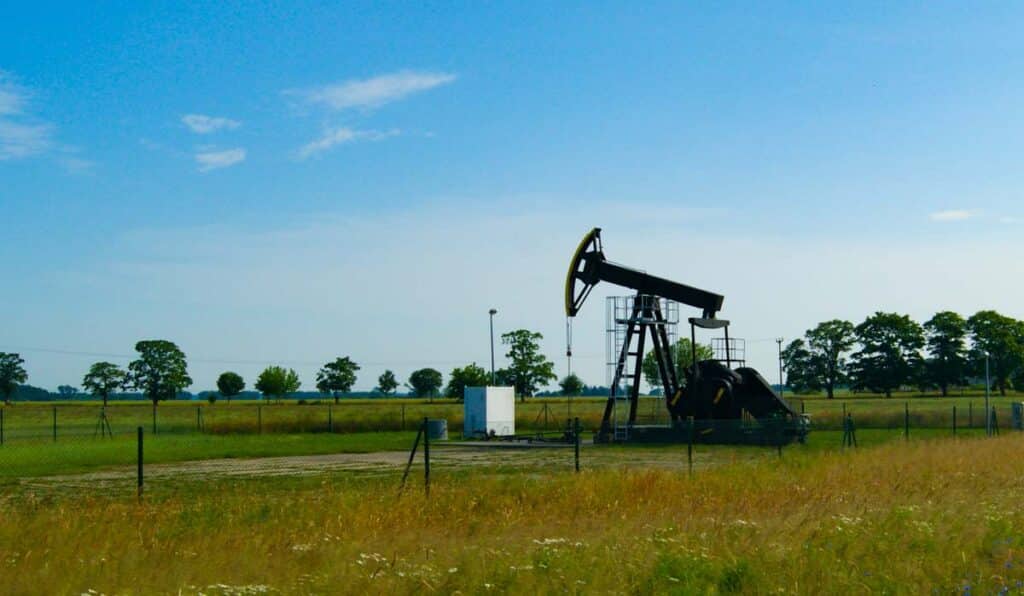
Gnitz Peninsula
Just a few kilometers south of the seaside resorts of Trassenheide and Zinnowitz, the Gnitz peninsula extends into the backwaters and yet is idyllically secluded from the flow of bathers. Especially if you are traveling by bike, Gnitz is a rewarding destination. Remote ponds, lovely garden cafés and lightly humming “horse heads” in the cornfields near Neuendorf give Gnitz its charm. Humming “horse heads”? Yes, that’s the name of the deep pumps that have been used to extract crude oil from a depth of 2,500 meters on the Gnitz peninsula since 1966 – almost 3,000 tons a year.
At the southern tip of Gnitz near the village of Lütow, a hiking trail leads to the 32-meter high White Mountain. From there you have a beautiful view of the Achterwasser. And if you are not afraid of the somewhat jerky stone slabs, you can cycle along the Krumminer Wiek to the tranquil Krummin.
Greifswalder Oie
Ahoi, aufs Schiff und hinüber zur Greifswalder Oie, auch wenn bei windigem Wetter die Überfahrt zu einer schaukeligen Angelegenheit werden kann! Das gehört dazu, ihr seid schließlich an der Ostsee. Knapp eineinhalb Stunden benötigt das Schiff der Reederei Apollo zur zwölf Kilometer vor Usedom gelegene Insel. Aufgrund seiner Lage im offenen Meer ist das Eiland ein wichtiges Rast- und Nahrungsgebiet für Wasser- und Zugvögel und daher streng geschützt. Nur die Besatzung eines dort stationierten Seenotkreuzers und die Helfer des Vereins Jordsand dürfen sich dauerhaft auf der Greifswalder Oie aufhalten. Jordsand betreibt auf Insel eine biologische Station und informiert Besucher über Flora und Fauna sowie die Geschichte der Oie.
Lüttenort
Lüttenort on the Achterwasser, where Usedom is particularly narrow, was the studio and domicile of the painter Otto Niemeyer-Holstein (1896-1984). Today, his picturesque estate is a museum and an important meeting place for all art lovers on the island. Niemeyer-Holstein lived on Usedom from 1933, initially in a discarded S-Bahn carriage, which he had purchased in Berlin for a good 60 Reichsmark and which remains the heart of Lüttenort to this day. Landscapes, nature, the Baltic Sea – these were his motifs, which he immortalized without any hometown affectation. He was a free spirit, a non-conformist in life as well as in art. You can see this for yourself in his Lüttenort.
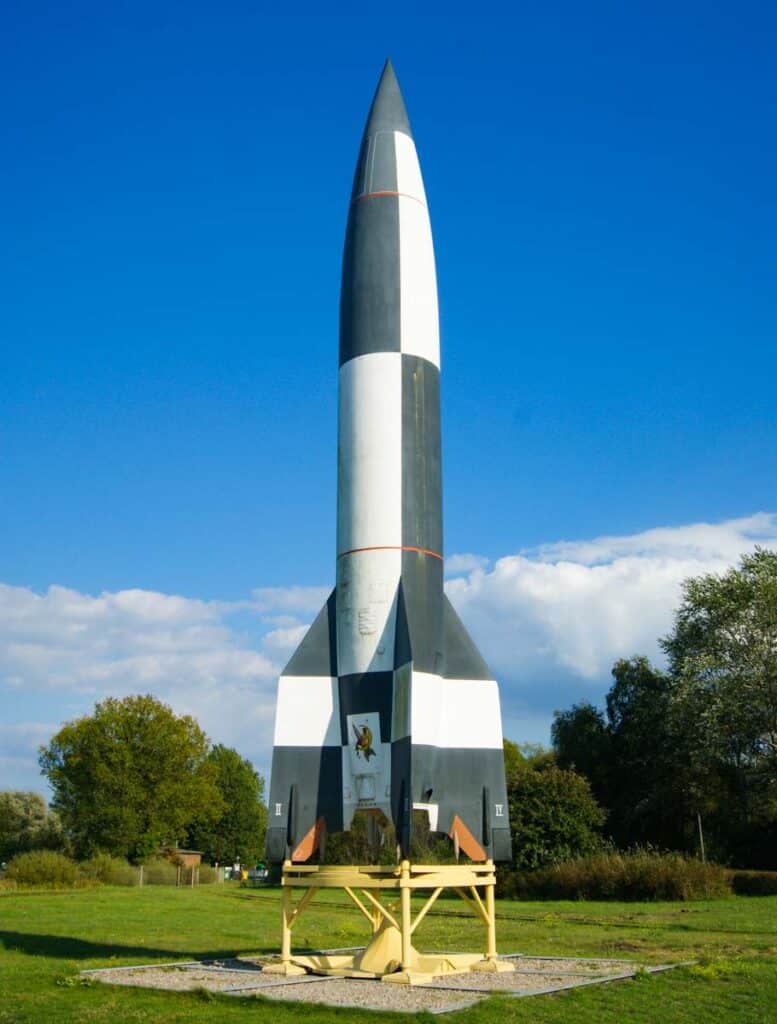
Historical-Technical Museum Peenemünde
Until the 1930s, Peenemünde was a poor fishing village on the northern tip of Usedom. Then the rocket researchers around Wernher von Braun took possession of the site and set up military test facilities to research their new type of rocket weapons. Later, the Red Army and the National People’s Army used Peenemünde as a military airfield.
The Historical-Technical Museum tells of this history in an extensive exhibition in the old power plant and enters a field of tension: On the one hand, it pays tribute to the fascinating technical achievements of those scientists who launched the world’s first rocket into space in Peenemünde. At the same time, it shows that rocket research was inextricably linked with National Socialist ideology, forced labor and the thousands of deaths that the construction and military use of the weapons required. Does this balancing act succeed? In view of many happy selfie snappers in front of the rocket model on the open-air site, doubts are warranted.
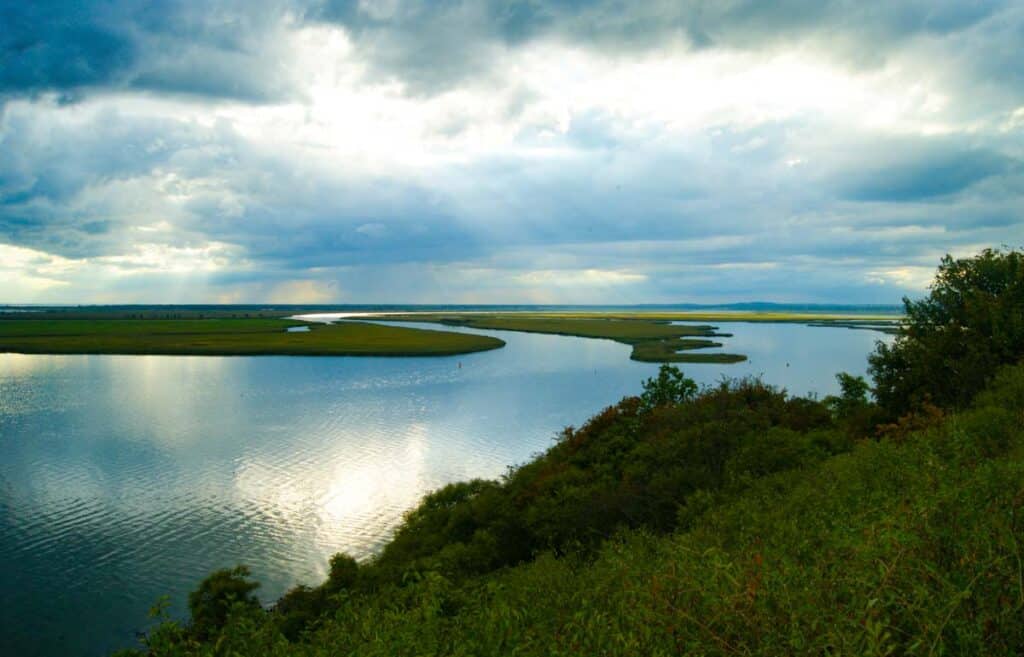
Wollin
Usedom’s little sister is called Wollin (Wolin). They are still separated by the Swinestrom, but soon a huge tunnel under the river will connect the two islands. Until then, the only way to reach Poland’s largest island from Usedom island is by ferry. Wollin is a paradise for nature lovers: lonely sandy beaches, steep coasts on the Baltic Sea and the Szczecin Lagoon, primeval forests and a turquoise lake make up its charm. Grandiose is the view from the cliff in Lebbin (Lubin) to the reed-covered islands in the Swine delta.
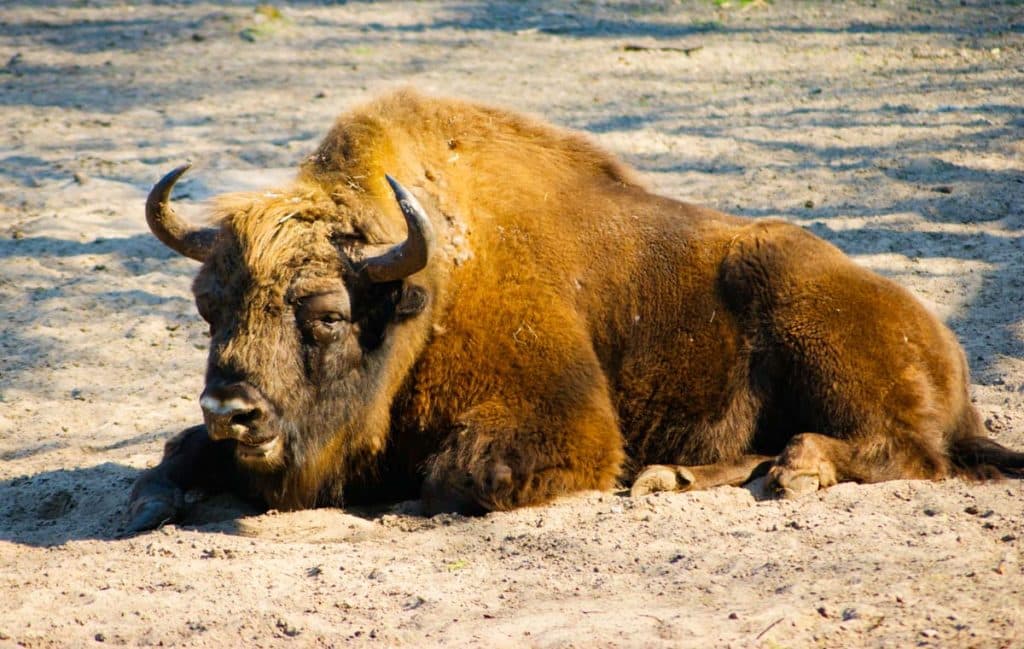
And in the Wollin National Park, bison are bred in a show enclosure. These shaggy wild cattle were considered almost extinct. Wollin, however, has a second face: In the seaside resort of Międzyzdroje, bathers from all over Poland party in the summer. Clubs and bars are open until late at night. Snack bars, fish stalls and cotton candy stands dominate the scene around the pier in the heart of the town.
Lubmin nuclear power plant
Was für eine ungewöhnliche Idee, im Urlaub das Innere eines Kernreaktors zu erkunden. Stimmt, aber schaurig-faszinierend ist es schon. Fünf Kilometer westlich von Usedom steht das stillgelegte AKW Lubmin. In der Wendezeit wurde das Kraftwerk abgeschaltet, und weil ein neu errichteter Block noch nicht mit Brennstäben bestückt worden war, lässt sich dieser heute besichtigen. Die Führung ist kostenfrei, nur anmelden müsst Ihr euch vorher. Übrigens: Obwohl die Kernkraft in Lubmin Geschichte ist, bleibt Usedom im Fokus der internationalen Energiepolitik. In Lubmin trifft die umstrittene Ostsee-Pipeline Nord Stream 2 aus Russland an Land, während Polen östlich der Insel in Swinemünde ein riesiges Flüssiggasterminal errichtet hat, um sich vom russischen Nachbarn unabhängig zu machen.
Practical tips
Where to eat and drink?
- Zur Alten Fischräucherei, Am Hafen 1, Rankwitz. On the terrace in the idyllic harbor of Rankwitz on the Peene River you will be served delicious fish – freshly caught or from the in-house smokehouse. The restaurant also enjoys a good reputation among the locals. In the neighboring fish shop you can also purchase many fish specialties from our own production.
- Restauracja El Papa-Pilar, ul. Bohaterów Września 83B, Swinemünde. When the sun shines, your gaze wanders over the fountains of the Old Town and the beer is served, you have to decide: Pike-perch with black lentils, rabbit roulade zucchini with buckwheat risotto, or beef steak after all. Polish cuisine – original, modern and incredibly tasty.
- Kurna Chata, ul. Piłsudskiego 20, Swinemünde. In the rustic, cozy Kurna Chata you will be served traditional Polish dishes in large portions: Pirogi (stuffed dumplings), pork cutlets, ribs, fish or sour flour soup in bread. Reservations are highly recommended. Exceptional is also the wonderful ambience of this farmhouse parlor.
- El Papa – Cafe Hemingway, ul. Bohaterów Września 69, Swinemünde. Homemade lemonade and delicious cakes – even in vegan versions – are waiting for you at Hemingway. The interior is as colorful as the cakes, and it’s cozy, too. You can also try a rabid dog (Wściekły Pies), ingredients: Vodka, raspberry syrup and Tabasco – invented in Świnoujście, known all over Poland!
- Gartencafé Zur Naschkatze, Dorfstraße 25, Krummin. A gem in the garden with many cozy sitting areas near the Krumminer Wiek. You’ll get coffee and delicious cake made according to a traditional Saxon recipe. A handsome cat roams from table to table – or lies somewhere in the shade. If you are traveling in the north of Usedom, then stop here!
No products found.

